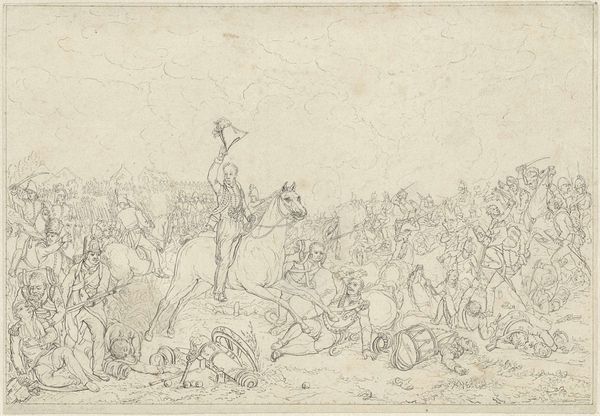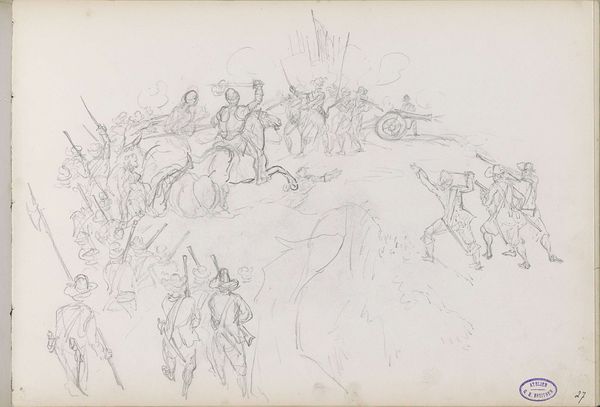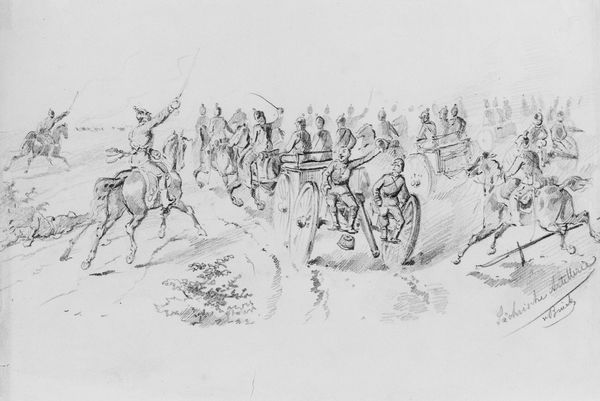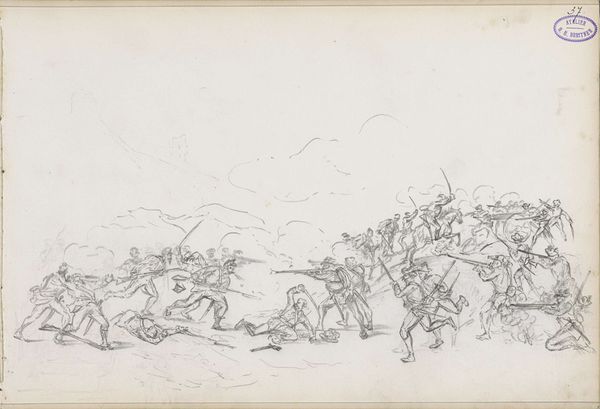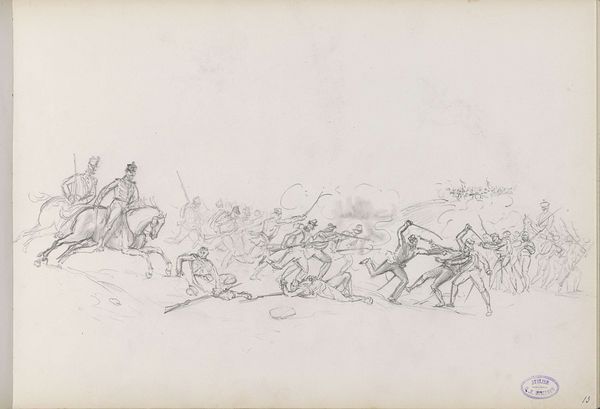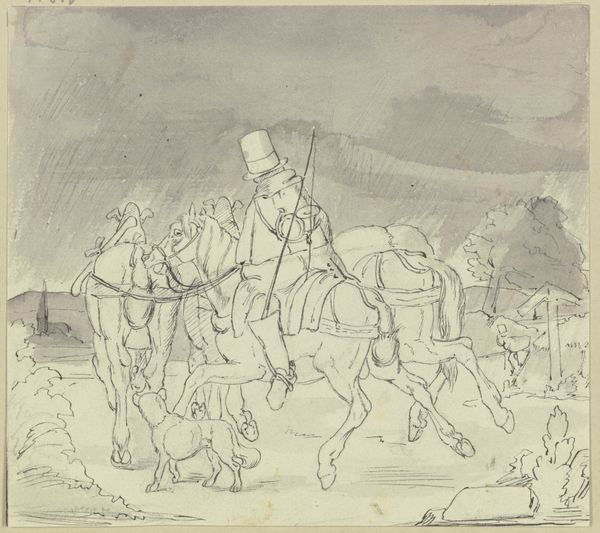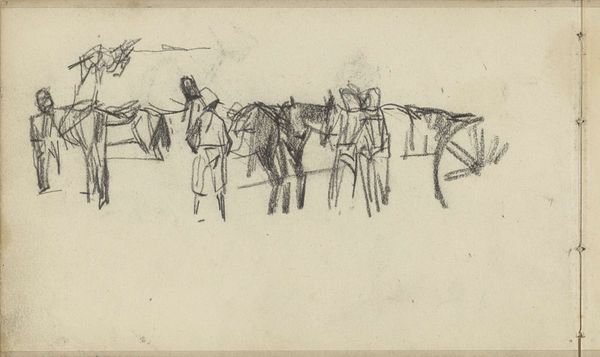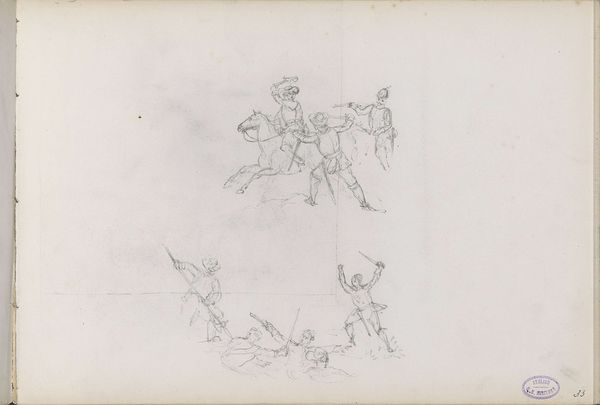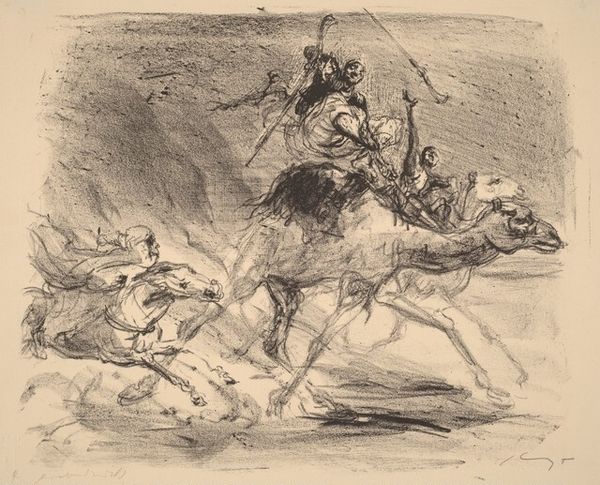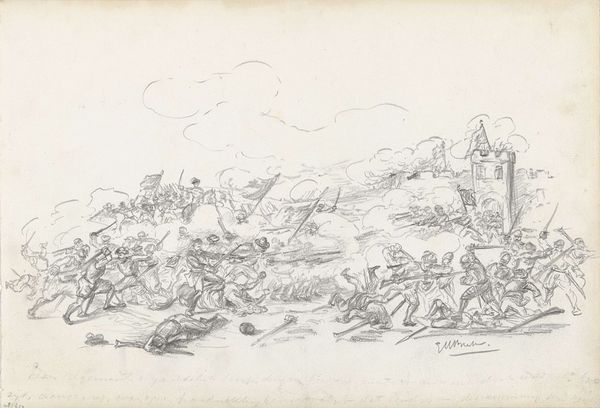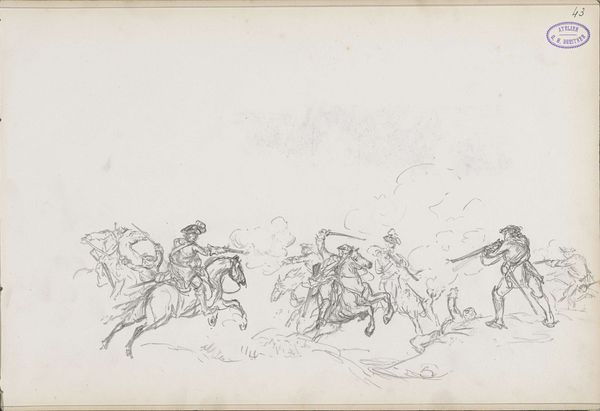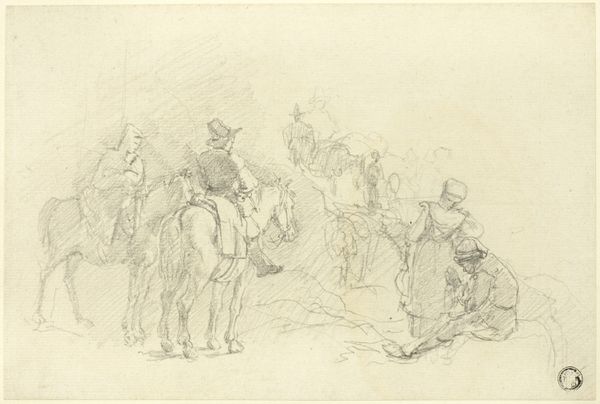
drawing, pencil
#
drawing
#
landscape
#
pencil
#
academic-art
#
realism
Copyright: Public Domain: Artvee
Curator: This is Winslow Homer’s "Summit of Mt. Washington," a pencil drawing from 1869. Editor: There’s something quietly observant about this drawing. All these exhausted mules and horses – it really speaks to the physical effort, the toll taken by this sort of mountain tourism at the time. Curator: Exactly. Mount Washington, particularly in the mid-19th century, was becoming this huge tourist destination, promising sublime views and an escape from urban life, which brought with it infrastructural and social changes. It's a document of the tourist industry finding its feet, literally and figuratively. Editor: And Homer captures this beautifully with a few swift strokes. There’s a real sense of immediacy; it feels like he’s jotted down what was directly in front of him. But there's an ambiguity to it too. Are we meant to admire the stoicism of these animals or question the human endeavor that brought them there? Curator: I think it's both, which makes it resonate. Homer isn’t sentimental. His realism presents the scene with a detached precision that lets us feel the raw experience. The pencil lines are so economical. Editor: The composition is rather unusual. The landscape is barely indicated. Our focus is on the animals. Maybe that reflects the relationship – that for visitors like Homer, it was not about understanding the natural context but about the view once the summit was reached, aided by animals who were made invisible despite providing necessary labor to reach that sublime vision. Curator: That rings true to how paintings by artists such as Bierstadt and Church also offered spectacular panoramas framed within narratives of expansion and control, or the illusion of freedom, that in actuality disguised environmental and labor exploitations. Editor: Looking at it now, I wonder how Homer himself viewed that industry? Curator: Ultimately, drawings like these act as powerful documents, reflecting more than the pure landscape, and sparking critical conversation, isn’t it so? Editor: Yes, and what's fascinating here is how a relatively quick pencil sketch like this can open up these considerations around mobility and commodified landscapes, asking: Who benefits and what is the true cost?
Comments
No comments
Be the first to comment and join the conversation on the ultimate creative platform.

